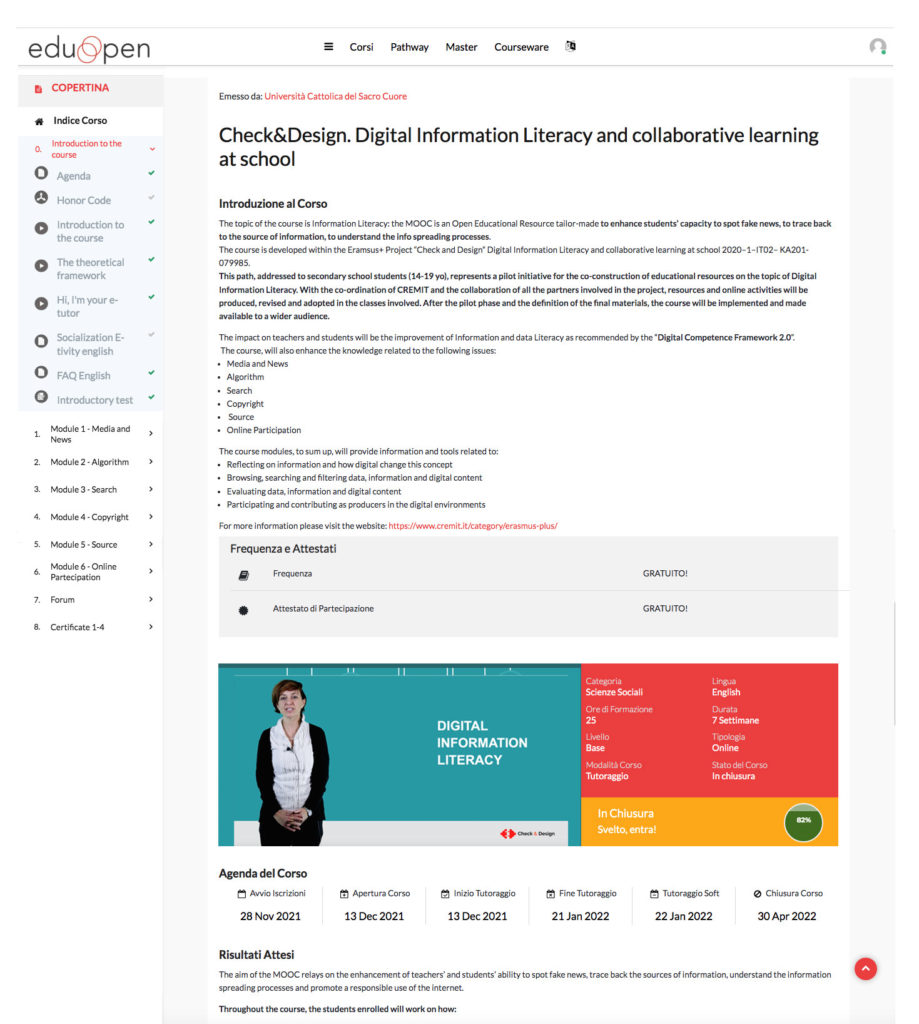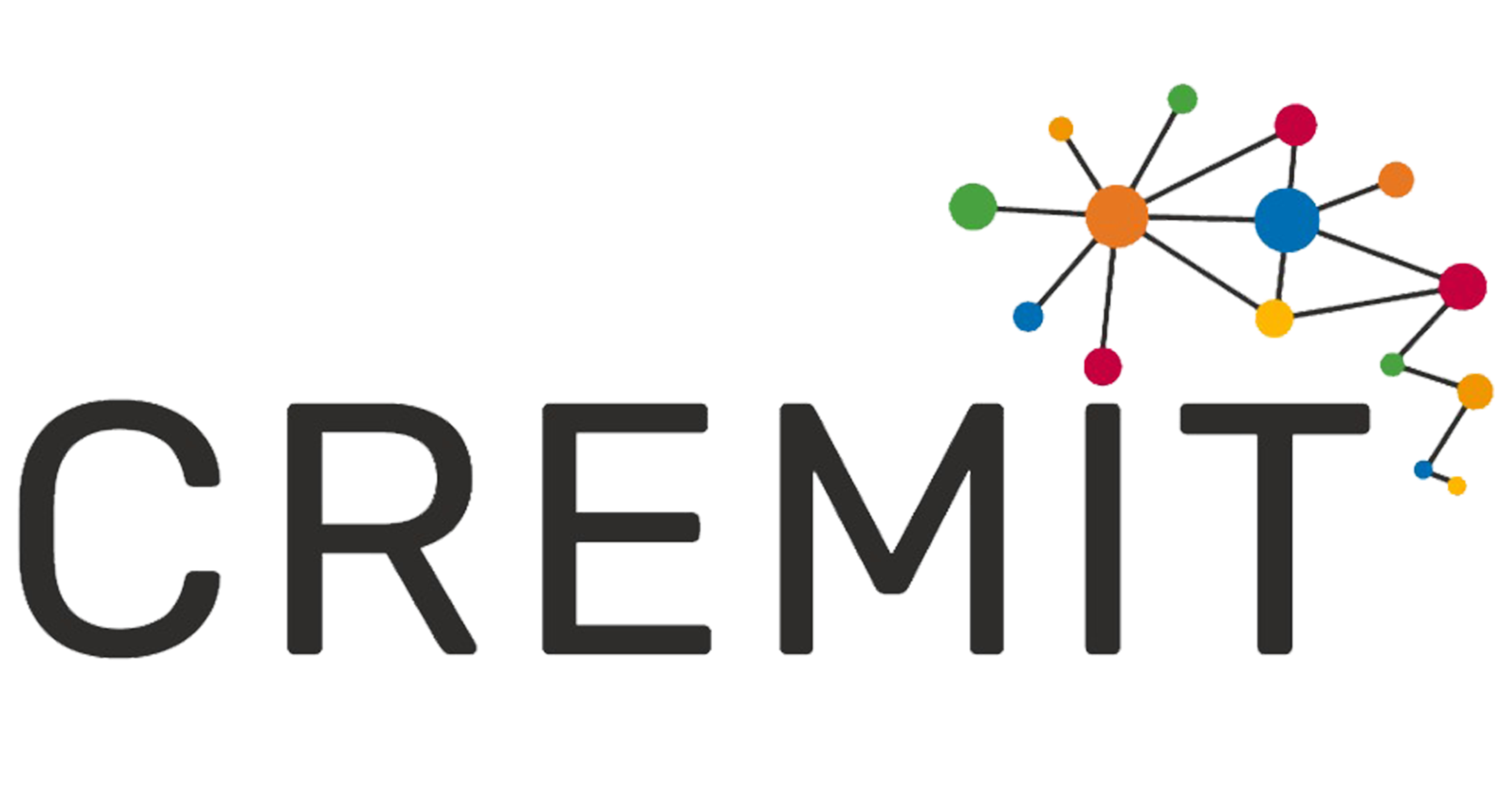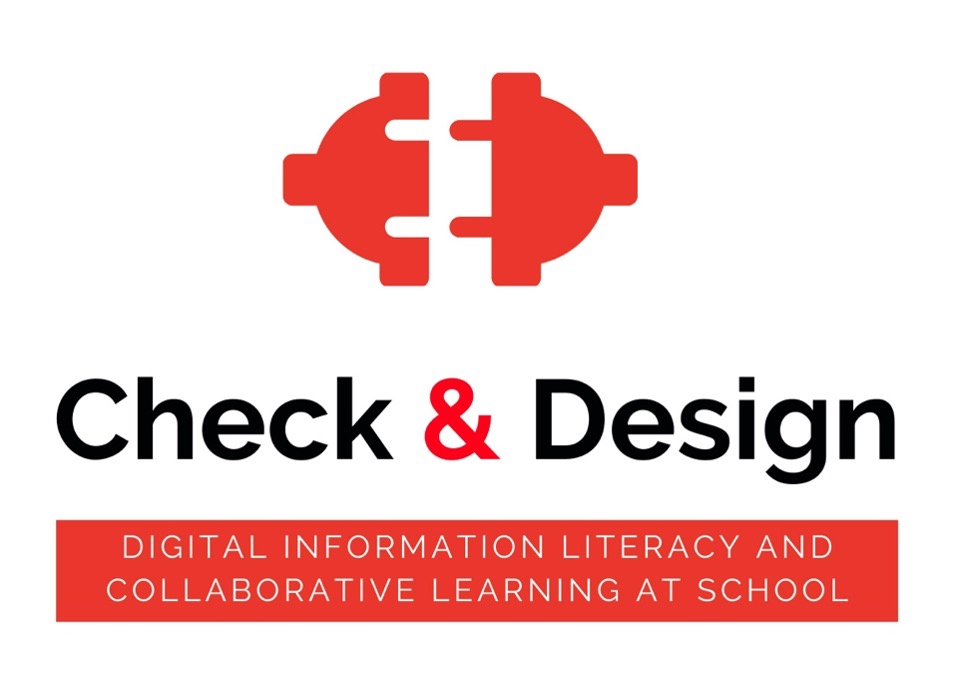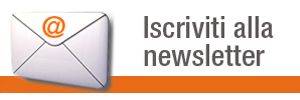di Rosaria Pace, tutor online del MOOC
Check&Design was born to meet the need of enhancing students’ capability to spot fake news, tracing back to the source of information, understanding the info spreading processes by implementing an innovative MOOC (Open Educational Resource) about the main Information Literacy topics.
The course is developed within the Eramsus+ Project “Check and Design” Digital Information Literacy and collaborative learning at school (2020–1–IT02– KA201-079985).
This path, addressed to secondary school students (14-19 yo), represents a pilot initiative for the co-construction of educational resources. The cooperation with all the partners involved in the project (5 European countries) – coordinated by the CREMIT staff – turned out to be a central ingredient for the creation of the innovative resources and online activities, furtherly adopted by the classes involved. After the pilot phase and the definition of the final materials, the course will be implemented and made available to a wider audience.
The impact on teachers and students will be the improvement of Information and data Literacy as recommended by the “Digital Competence Framework 2.0”.
Furthermore the course enhances the knowledge related to the following issues (MOOC weekly topics):
- Media and News
- Algorithm
- Search
- Copyright
- Source
- Online Participation
The course modules provide information and learning activities related to:
- Reflecting on information and how digital changed this concept
- Browsing, searching and filtering data, information and digital content
- Evaluating data, information and digital content
- Participating and contributing as producers in the digital environments
The aim of the MOOC relays on the enhancement of teachers’ and students’ ability to spot fake news, to trace back the sources of information, to understand the information spreading processes and promote a responsible use of the Internet.
Throughout the course, the students enrolled are also informed and trained on how:
- to articulate information needs;
- to search for data, information and content in digital environments;
- to access them and to navigate between them;
- to create and update personal search strategies;
- to analyse, compare and critically evaluate the credibility and reliability of sources of data, information and digital content.
Considering the impact on teachers, instead, it foresees their improvement in:
- enabling learners to plan, monitor and reflect on their own learning, provide evidence of progress, share insights and come up with creative solutions;
- using digital technologies for formative and summative assessment and enhancing the diversity and suitability of assessment formats and approaches;
- generating, selecting, critically analysing and interpreting digital evidence on learner activity, performance and progress, in order to inform teaching and learning;
- using digital technologies to provide targeted and timely feedback to learners;
- adapting teaching strategies and providing targeted support, based on the evidence generated by the digital technologies used;
- enabling learners and parents to understand the evidence provided by digital technologies.
Each module of the MOOC – 6 in total – provides video lessons, thematic in-depth resources, e-tivities (learning work mandates) to be adopted in each classroom, digital materials for deepening each topic, a final test. Different uses of the MOOC are allowed in schools: blended, online and self-paced instruction; Peer&Media education activities.
The image below shows the course overview and the menu:

Going deeper into the co-design process of the course itself, it is articulated through the following actions:
• webinar with all the school partners during the platform set up, in order to explore the Mooc environment and test a prototype of learning resources (layout, duration…).
• Guided exploration of the EduOpen structure and single areas.
• Systematic collection of teachers’ feedback through specific forums. The cross-national and cross-cultural spirit of the course stands as one of the greatest value of the MOOC. The international interaction is a relevant learning value for students and teachers involved (around 200 members), as well as for the entire project staff. Moreover, it is worthwhile to mention the role of “co-designers” that the European teachers played over the MOOC delivery. The platform allows and encourages an informal communication deliverable by opting for a one-to-one modality.
Versione italiana: CHECK & DESIGN: CO-COSTRUZIONE DI UN CORSO MOOC TRANSNAZIONALE, CREMIT
Per approfondire:








